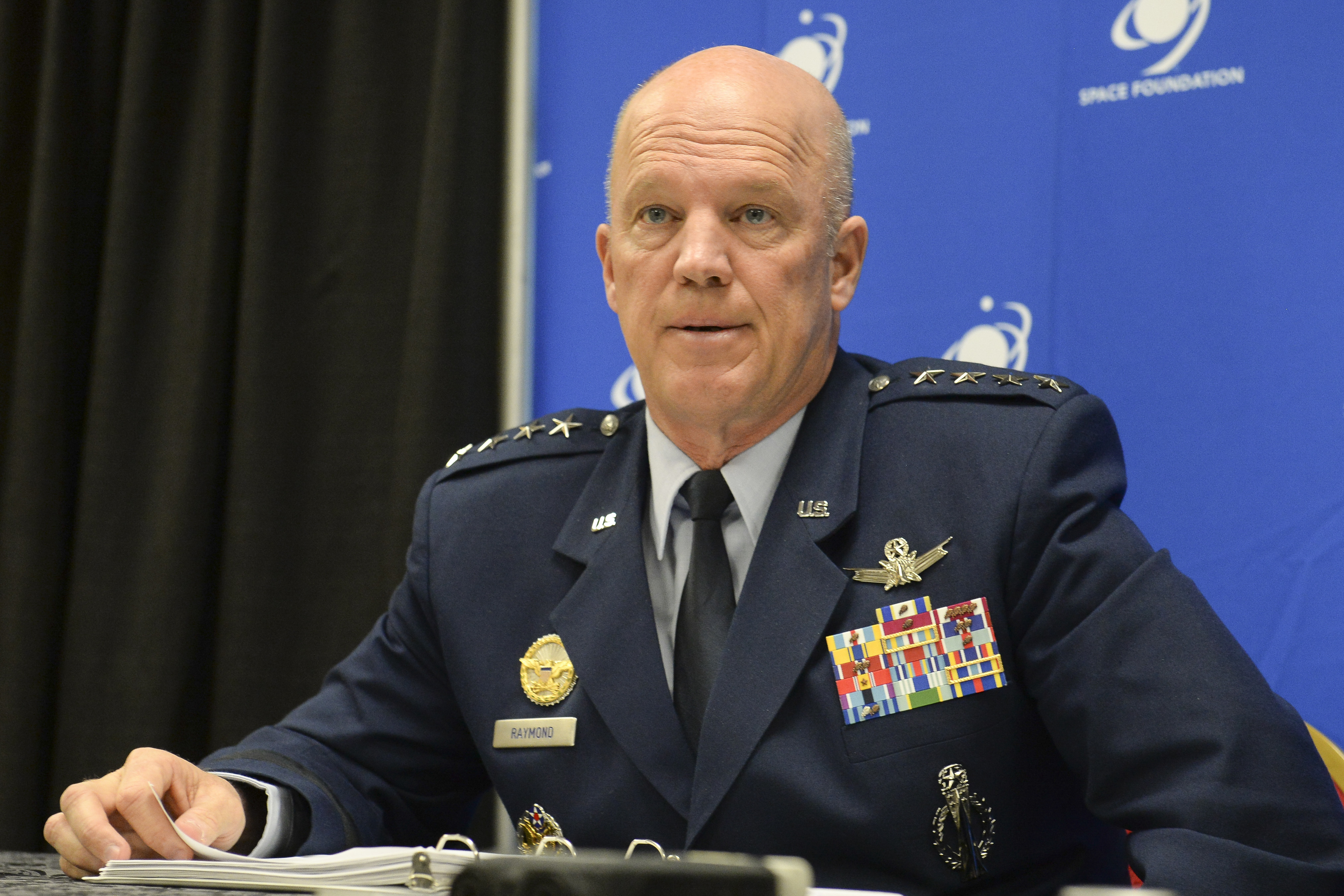
Gen. Jay Raymond, commander of Air Force Space Command, answers questions from reporters in Colorado Springs, Colo., April 6, 2017. Air Force photo by Dave Grim.
As chief of US Strategic Command’s elevated joint space component, Gen. Jay Raymond will be better positioned to integrate space power across acquisitions, testing and evaluation, and operational functions.
Ultimately, this organizational change? “will improve our nation’s space warfighting effectiveness,” Air Force Space Command spokesperson Lt. Col. David Westover told Air Force Magazine in an email.
Raymond will also continue as commander of AFSPC, which he has led since October 2016. He will have “two separate staffs,” one for AFSPC and one for his new role as Joint Force Space Component Commander (JFSCC). These groups will work together to fuse the management of space assets, like satellites, with the mission of providing space-based effects to the combatant commanders on the ground, Westover said.
Raymond’s new joint STRATCOM role “can be compared to the Joint Force Air Component Commander, Joint Force Maritime Component Commander, or Joint Force Land Component Commander roles in theater,” Westover explained. In this way, the move is consistent with the Air Force’s ongoing efforts to establish a new concept of operations for space, reflecting the service’s awareness that space is no longer a benign environment, but rather a potential combat domain.
Adding a joint command to Raymond’s authorities will have the effect of “elevating and evolving our space enterprise to be more robust, resilient, and better prepared to fight and win a war should it extend into space,” Westover said.
The new position will allow Raymond to “provide day-to-day four-star advocacy” within the Defense Department for the full gamut of space issues, from training forces to procurement of new systems, and will “greatly improve the integration with the joint warfighters across all geographic and functional combatant commands.”
Westover said the move was planned to coincide with the establishment of a new deputy chief of staff for space operations, whose role will be to raise the profile of space operations “within the Air Staff, and provide advice and counsel on space matters directly to the [Secretary of the Air Force] and [the Chief of Staff of the Air Force].”
The new STRATCOM position and the new A-11 role are part of USAF’s and DOD’s effort to make military space operations more flexible and agile in response to congressional critics who say the Air Force’s space enterprise is too diffuse, cumbersome, and slow to be effective in the new, contested space environment.
Westover said the expected initial operational capability of the elevated joint space component, with Raymond at its head, is “around December 2017.”